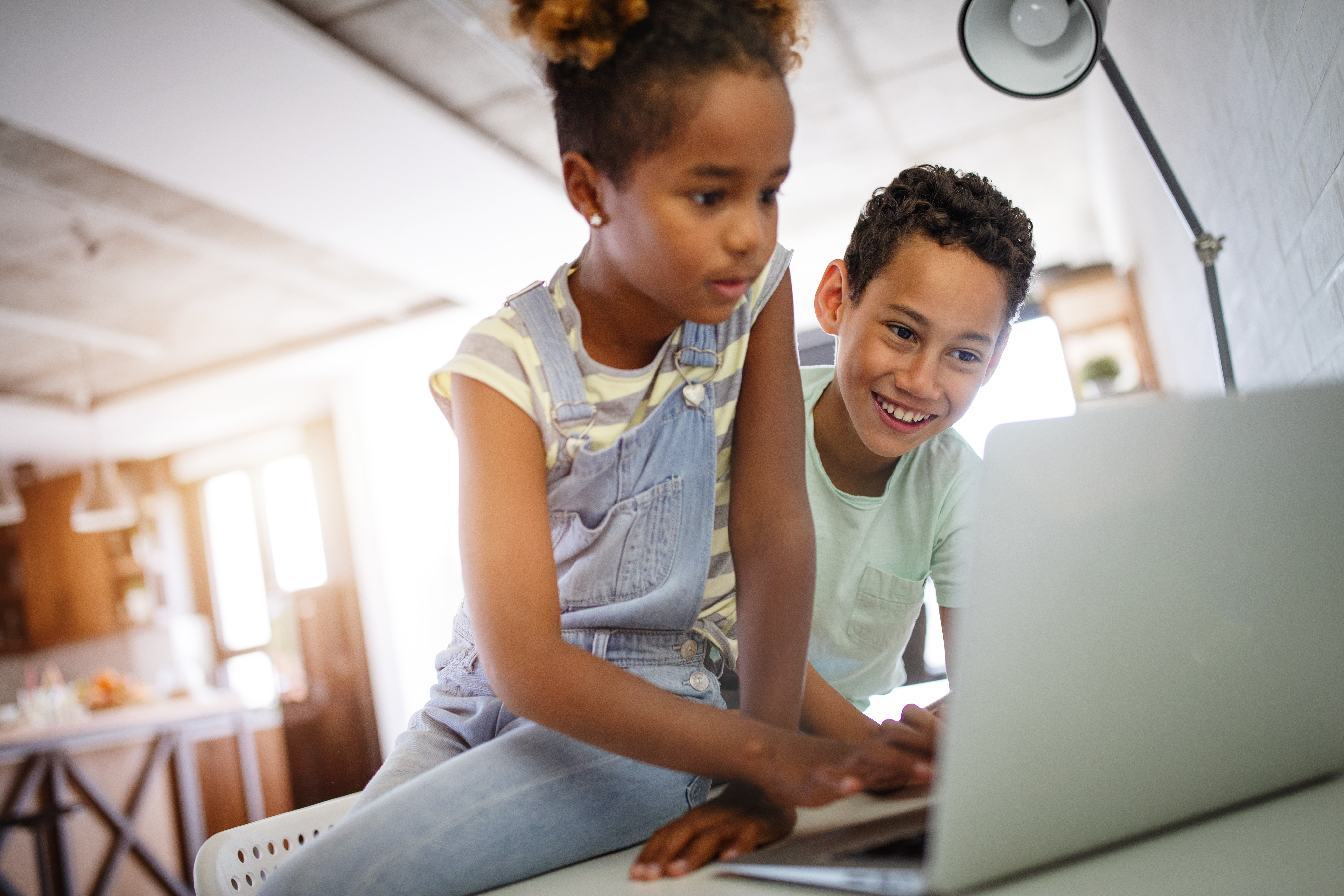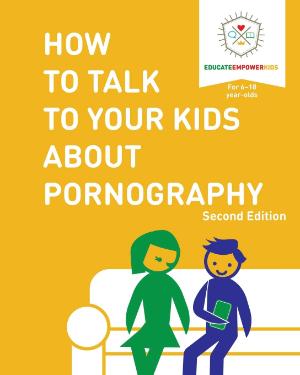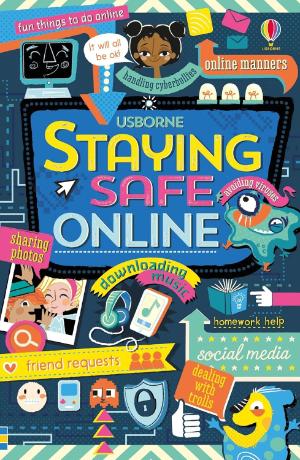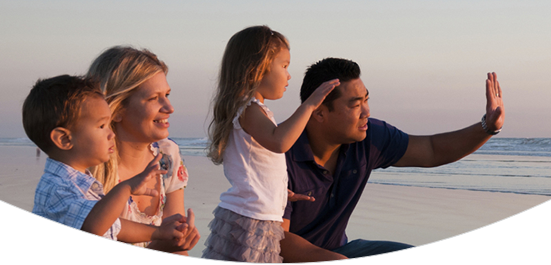
Pornography today is very different than it was even 20 years ago. The free porn that is available to kids without using a credit card is so violent that it is traumatizing to kids who have no other positive experience with sex.
Research shows that the younger a child is when they first engage with pornography, the more likely they are to exhibit symptoms of anxiety and depression, both in the teen years and as adults. They are also more likely to engage in risky sexual behaviors and to experience erectile dysfunction, suggesting impairment to healthy sexuality. Finally, as is the case for all exposure to violence, they show less capacity for empathy, which is a risk factor for healthy relationships.
Why you need to talk with your child about porn.
Your child will see porn at some point. It will be very upsetting. We almost certainly aren't just talking about sex here, but about violence, like choking and slapping. Your child will feel afraid and disgusted. They might also feel aroused. They will wonder if this is something all adults do, even you. They will wonder if this is something they will have to do some day. They will feel like a bad person. They may obsess, have nightmares. They may go back to watch more porn, in an effort to sort out these complicated feelings.
But here's the thing. If you have talked with your child about porn, and you work to keep a strong connection, you child will come and tell you. You have the chance to help them. If you have NOT spoken with your child about porn, they will assume this is something they cannot ask you about, and they will carry this upset alone. Talking about porn will not destroy your child's innocence; it will protect it. And you don't even have to mention sex!
When to talk with your child about porn.
If your child has any access to the internet, you need to have this discussion. Approach this the way you would any other safety conversation. If your child was being bullied at school, you would want them to come and tell you. If another kid suggested they go up on a roof, or play with a gun in the other child's home, you would want them to leave, and come and tell you. These are safety discussions. You can start discussions about porn in the same way, without mentioning the word porn and without mentioning sex.
Basic Scripts to talk with your child:
Ages 3–5: “Come to me if something feels yucky or scary.”
At this age, children are concrete thinkers. Focus on body safety and emotional cues without introducing the concept of pornography.
- “When you're using a screen, you might see something that feels yucky or scary or makes your tummy feel funny. Maybe someone isn’t wearing clothes, or someone looks hurt. If that ever happens, stop watching and come get me right away. I’ll help you. You're never in trouble.”
- “There are a lot of great things to watch on screens, but sometimes things pop up that aren’t for kids. That’s not your fault. Grown-ups are here to keep you safe.”
Why it works: It emphasizes bodily awareness and trust in the parent without naming sex or porn explicitly—just a simple framework of safety and support.
Ages 6–9: “Not everything on the internet is safe for kids.”
Children at this age understand rules and categories. Introduce the idea that some online content is inappropriate or unsafe.
- “The internet has a lot of great things, but sometimes you might see something that isn’t made for kids—like people without clothes on, or videos that feel scary or confusing. These kinds of videos are made by adults and can be really upsetting to see.”
- “If you ever see anything like that—where people are naked or someone’s being hurt—just stop and come find me. You won’t be in trouble. I’ll help you understand what you saw.”
Why it works: It begins naming what pornography might look like and emphasizes that it's okay to come to you. It reassures the child that they are not to blame.
Ages 10–12: “Let’s talk about what’s real and what’s not.”
Preteens are curious and increasingly exposed to peer influence and online content. They need help distinguishing fantasy from reality and reassurance that questions are welcome.
- “There’s a lot of stuff online about bodies and sex, but not all of it is true or healthy. Sometimes kids see things called pornography—videos made by adults that show people naked or doing sexual things. These videos are made to shock and get attention, not to teach about real relationships.”
- “The people are actors who are hired to do these things. They think people will want to watch because they find it exciting. But most adults don't want to watch something like that, and it is never okay for kids to watch it. So if you ever find anything like this online -- where someone is hurting an animal or a person, or people are naked, or anything makes you even a little bit upset--I want you to just leave it on the screen and come find me. No matter what. You can always tell me, and I will help."
- “It’s totally normal to be curious. But if you ever see something like that—by accident or even on purpose—I want you to come talk to me. You’re not in trouble. I’m always here to help you make sense of it.”
Why it works:This script uses accurate terms without judgment, acknowledges curiosity, and opens the door for continued conversation.
Ages 13–15: “You deserve honest information, not internet junk.”
Teens are forming values and identities, and they need honest conversations about consent, respect, and how porn distorts intimacy.
- “You probably already know that pornography exists, and maybe you’ve seen it—whether by accident or on purpose. I just want you to know: Porn isn’t real sex. It’s created to get attention, often by showing extreme or even violent stuff. It doesn’t show love, respect, or communication—things that are part of real relationships.”
- “You might feel curious, or you might have strong reactions when you see it. That’s normal. But I want to be someone you can talk to about this stuff. You deserve real information, and you deserve to learn about sex in a way that includes kindness, pleasure, and respect.”
Why it works: It assumes awareness, affirms autonomy, and encourages critical thinking— while keeping the parent in a trusted, non-judgmental role.
Points to make as you talk with your child:
1. Just as some adults drink alcohol but that isn't good for kids, some adults like to look at photos or videos of naked people
but that isn't good for kids. It changes your brain and the way you feel about sex and relationships.
2. Your child needs to tell you if they see naked photos or videos online.
so you can help them understand what they've seen and keep them safe in the future. Explain that if your child somehow sees inappropriate photos, you will not be angry at them. Their job is just to leave the photos on the screen, and to immediately come to tell you about it.
3. Pornography is a multi-billion dollar industry.
The purpose has nothing to do with sex. The purpose is to make money. So the product (porn) is designed to be highly addictive, so that people will keep coming back to it. Even the free sites carry ads (for instance, for Viagra) and harvest the data of their users to sell, which is very lucrative. The porn industry also aggressively uses social media and search engine optimization to find new users.
4. Porn producers specifically target adolescent boys.
They know that the brain is rewiring rapidly at puberty and into the teen years. That means that any repeated experience at that age has more impact, because the brain takes shape around it. Young people who engage with porn will always be more vulnerable to porn addiction and thus will be more of a financial asset to the porn producers.
5. Porn is fictional, not real.
It is actors who are paid to present something enticing, just like other kinds of acting. Often, their bodies are artificially augmented or the size of body parts is changed in the editing process. Real bodies don't look like that; real penises and breasts are not that big.
6. Many kids use porn to learn about sex,
but porn is not a good way to learn about sex, because porn sex is not realistic. Research shows that boys who engage with porn have more negative beliefs about girls and sex, such as that girls like to be choked or tied up. Girls also go to porn sites, describing it as the best way to learn how to be sexy and appealing to boys. Both girls and boys report being upset by what they see on porn sites.
7. Porn is almost always dehumanizing,
because it depicts sex without warmth, intimacy or love. Most porn today also includes verbal and/or physical aggression toward women, so those photos and videos can really traumatize kids. In fact, researchers describe porn exposure as child abuse because the negative effects on children, preteens, and teens are so dramatic.
In the UK and Germany, legislation has been passed that prohibits visitors to porn sites until their age as over 18 has been verified with a third party digital chip. This legislation has been very effective in preventing hundreds of thousands of kids from being exposed to violent pornography. Ask your legislator to introduce or sign on to such legislation in the US (or wherever you live!)
Articles, Research and Quotes on Porn:
"When I talk to adults, I get the strong sense they picture a hot bombshell in lingerie or a half-naked model on a beach. This is not what I stumbled upon back in fourth grade. I saw simulated incest, bestiality, extreme bondage, sex with unconscious women, gangbangs, sadomasochism, and unthinkable physical violence. The porn children view today makes Playboy look like an American Girl doll catalog." - Isabel Hogben, age 16
A recent Cambridge University study shows that porn’s effects on the brain are neurochemically identical to drug addiction.
An Indiana University study shows that the earlier a girl is exposed to porn, the more she will accept behaviors like choking, facial ejaculation, and “aggressive fellatio” from a sexual partner.
A BBC study of 2,000 UK men ages 18–39 found that 71 percent have gagged, slapped, choked, or spat on their partner during sex. A third said they don’t think to ask for permission before committing these acts.
"Pornhub as of May 2020 had 706,000 videos available on the site that had been flagged by users for depicting rape or assaults on children." - Nicholas Kristof
Louisiana state representative Laurie Schlegel was one of the first lawmakers to break ground on this issue. Her bill imposed age verification requirements on sites like Pornhub, and as a result, traffic to that site is down by 80 percent in her state.
Prevention Strategies
- Install Robust Parental Controls
- Use filtering software on all devices
- Set up safe search on browsers and YouTube
- Regularly monitor your child’s online activity
- Keep devices in common areas, not bedrooms








